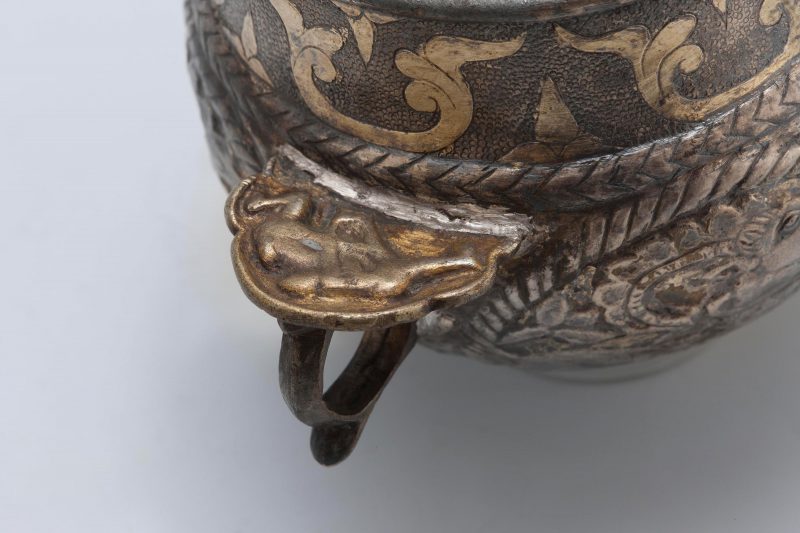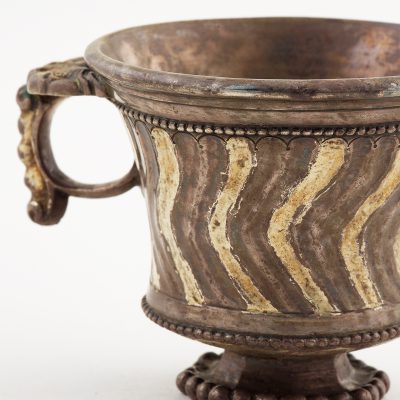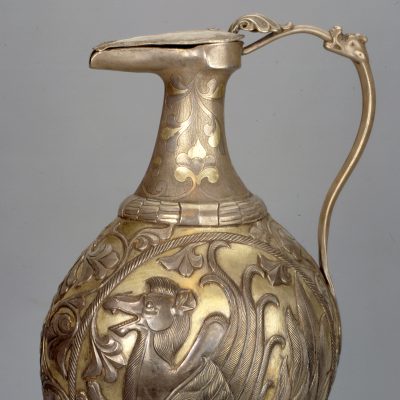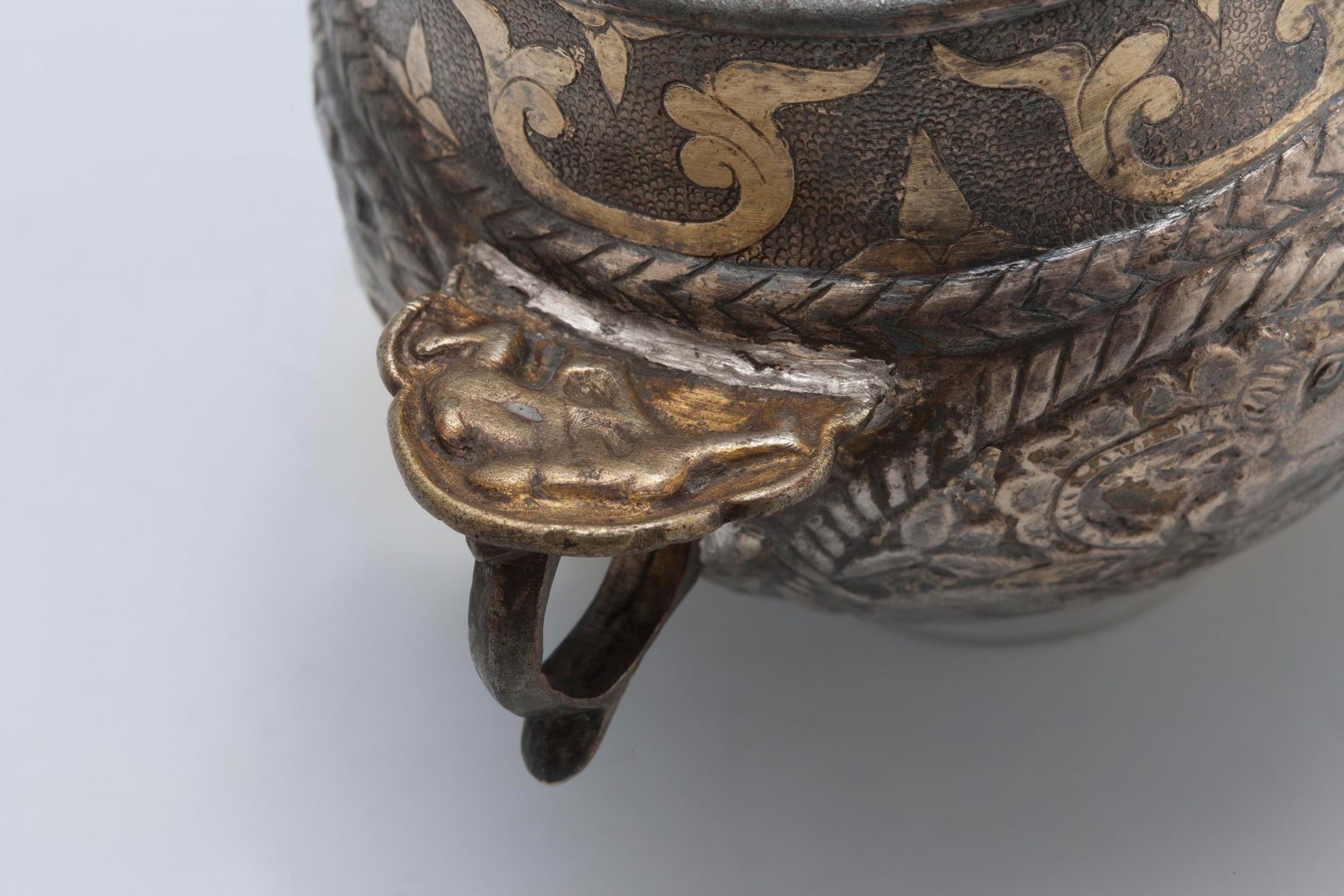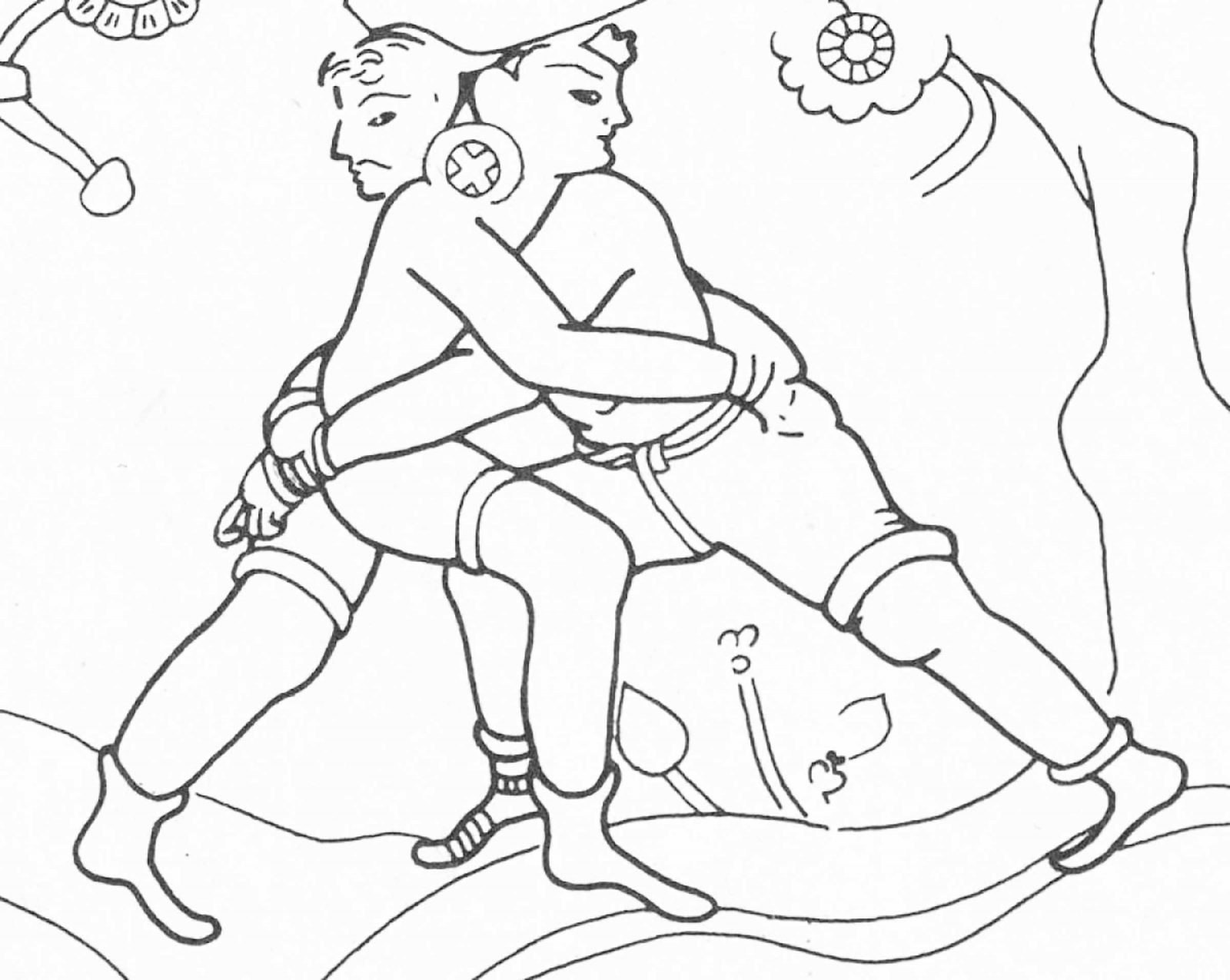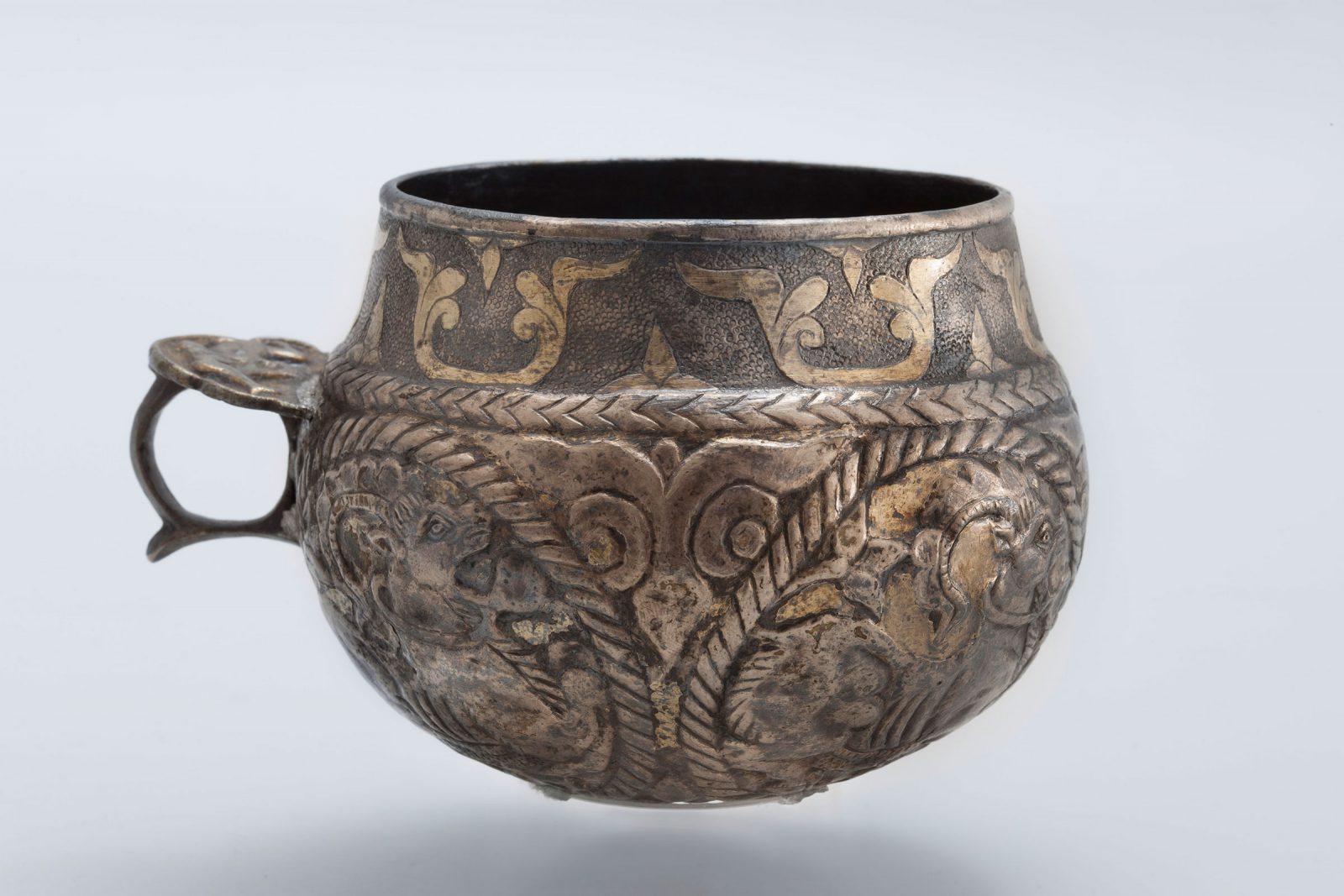
Cup with Goats
Ancient Sogdiana, Central Asia, 8th century CE
Chased, engraved, and gilded silver, H. 7.3 × W. 12 cm
Found at Don River, near Azov, Russia ; acquired in 1927
State Hermitage Museum, St. Petersburg, S-251.
Photograph © The State Hermitage Museum.

Fig. 2 Detail of wall painting at Panjikent XVII/14.
After Alexander M. Belenitsky [Belenizki], Monumental’noe iskusstvo drevnego Pendzhikenta: Zhivopis’, skul’ptura Монументаль’ное искусство древнего Пенджикента: Живопись’, скул’птура (Monumental art of ancient Panjikant: Painting and sculpture) (Moscow: Iskusstvo, 1973), 30.
Made by a Sogdian artisan, the shape of this cup was borrowed from the metalwork of neighboring Turks and was likely intended for a Turkic patron. It features a thumb rest with two wrestlers grappling, and its bulbous body narrows at the neck—elements typically associated with steppe peoples; Fig. 1. Wrestling, or kurash, was a sport widely practiced across Eurasia, and it is depicted in wall paintings at Panjikent ; Fig. 2. Sogdians also used cups of this shape, since they appear in Panjikent wall paintings. The cup portrays mountain goats (ibexes) within each of the four large roundels. They are standing on rocks with scarves tied around their necks, one of them sporting a bell. In Iranian hunting practices, the goat with a bell served as the herd leader, while those with ribbons around their necks were used for luring game to the king’s hunting grounds. To Iranian peoples, the ibex also symbolized the god of victory, Verethragna. With habitats spanning the high terrains of central and northern Asia (including the regions corresponding to modern-day Uzbekistan, Tajikistan, Kyrgyzstan, Kazakhstan, and south-central Russia), these animals would also have been familiar to the peoples of the steppe.
Artistic metalworkSogdian Metalworking Learn more about Sogdian metalwork was frequently exchanged through trade and diplomatic gifts between Sogdians and their neighbors. It is possible that this cup was part of a tax extracted by the Western Turks from one of the Sogdian city-states in exchange for military protection. Since this cup was found by chance in the mouth of the Don River near the Sea of Azov in present-day Russia, it may have been carried northwestward from Sogdiana along the steppe at some point after its creation. Whether it was sold or offered as tribute, it is interesting that several Iranian and Turkic motifs were incorporated into the cup, making it more attractive to a range of potential consumers.
by Julie Bellemare
Pavel Lurje [Lur’e] and Kira Samosyuk, eds., Expedition Silk Road: Journey to the West; Treasures from the Hermitage (Amsterdam: De Nieuwe Kerk, 2014), no. 142; Boris I. Marshak [Marschak/Maršak], Sogdiiskoe serebro: Ocherki po vostochnoi torevtike Согдийское серебро: Очерки по восточной торевтике [Sogdian Silver: Essays on oriental toreutics] (Moscow 1971), 142; Boris. I. Marshak [Marschak/Maršak], Silberschätze des Orients: Metallkunst des 3.–13. Jahrhunderts und Ihre Kontinuität (Leipzig: E. A. Seemann, 1986), figs. 57 and 74.
Boris I. Marshak [Marschak/Maršak], Sogdiiskoe serebro: Ocherki po vostochnoi torevtike Согдийское серебро: Очерки по восточной торевтике [Sogdian Silver: Essays on oriental toreutics] (Moscow 1971), 36–7. Available online at https://depts.washington.edu/silkroad/museums/shm/marshak/marshak.pdf
Sören Stark, “Luxurious Necessities: Some observations on foreign commodities and nomadic polities in Central Asia in the 6th to 9th centuries,” in Jan Bemman and Michael Schmauder, eds., Complexity of Interaction along the Eurasian Steppe Zone in the First Millenium CE. Bonn Contributions to Asian Archaeology 7 (Bonn, Vor- und Frühgeschichtliche Archäologie Rheinische Friedrich-Wilhelms-Universität Bonn, 2015), 465.
